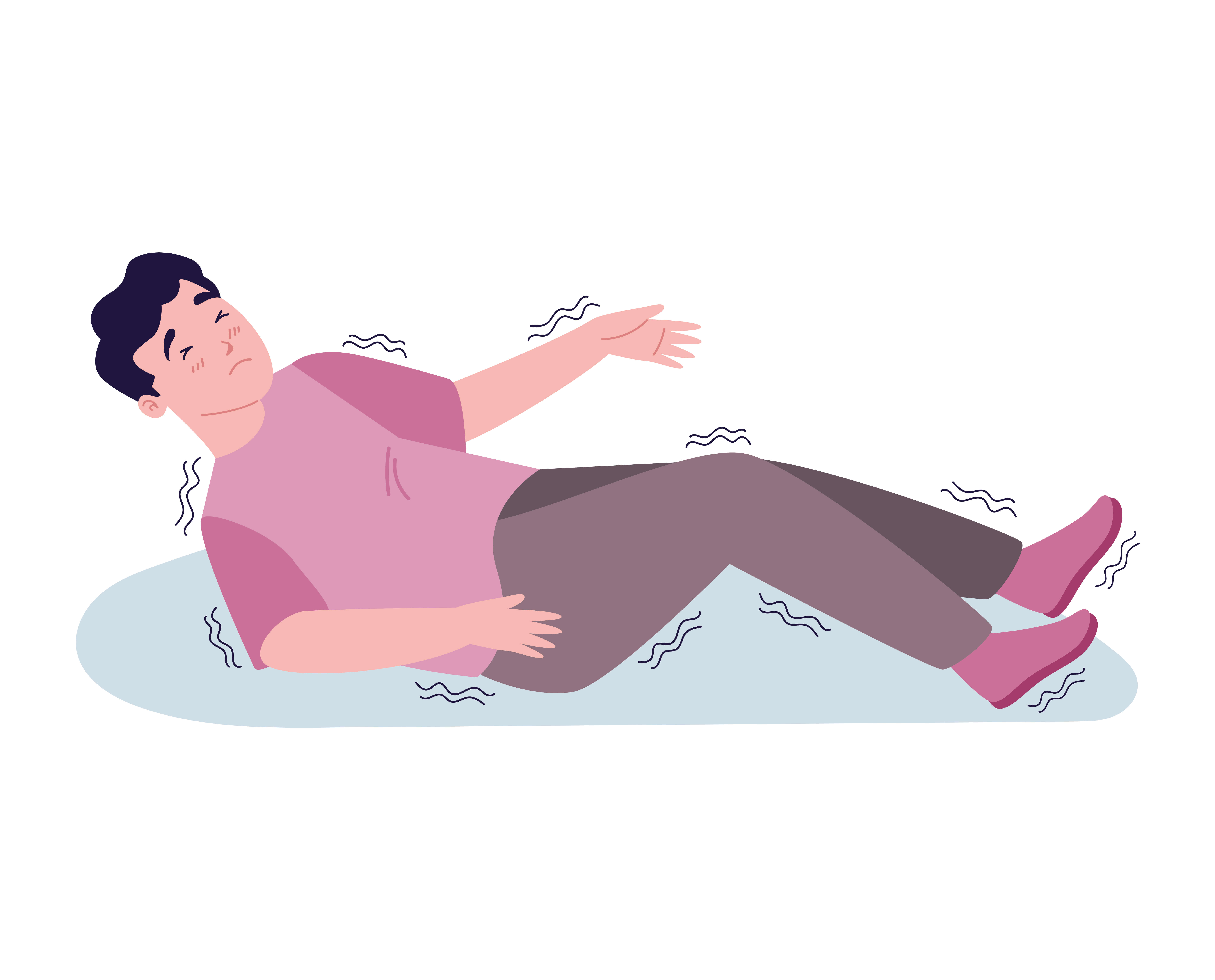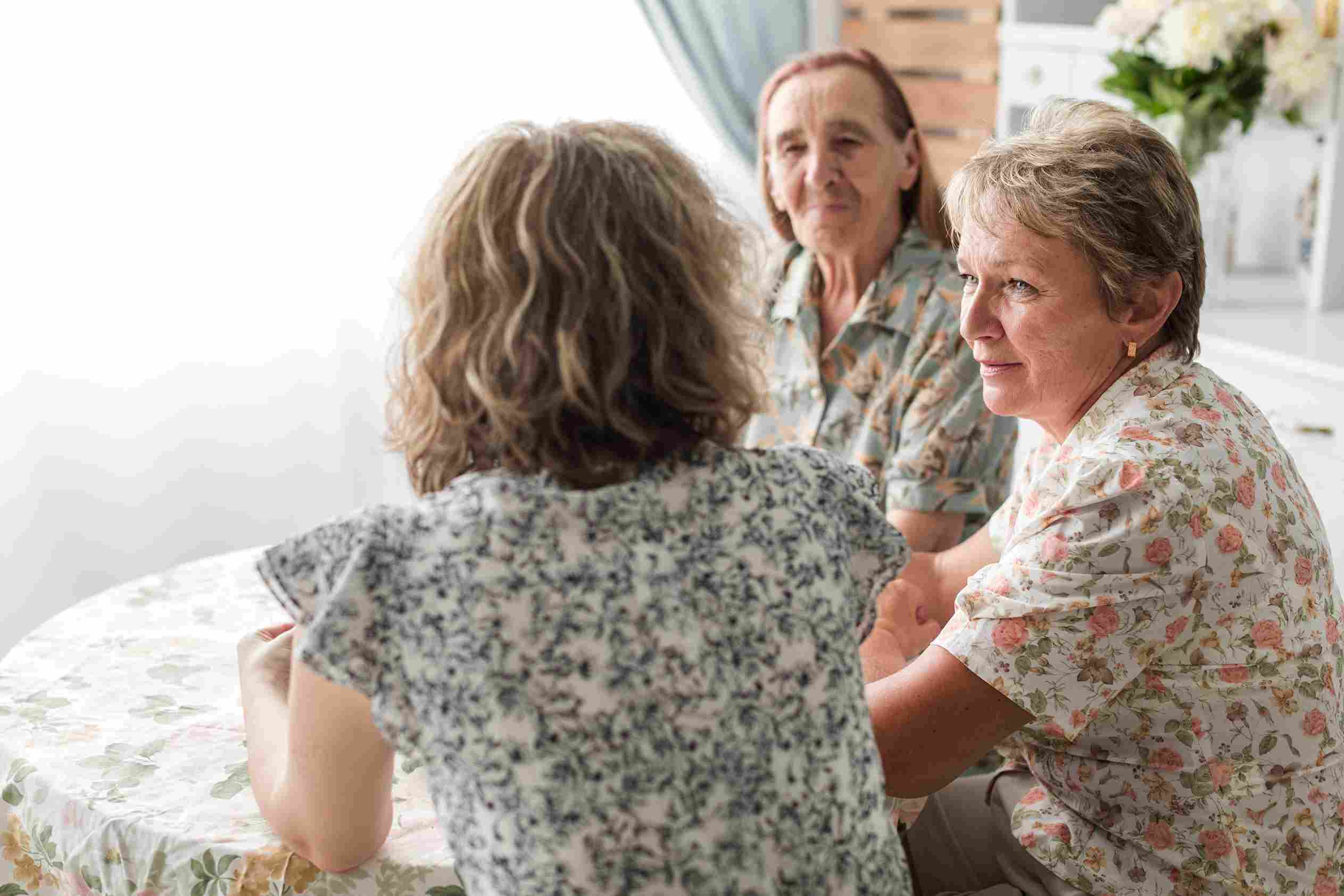Sleep troubles plague nearly half of adults over 65, with rates climbing even higher among those managing chronic health conditions. The quiet struggle with insomnia in elderly patients often goes unaddressed, despite its profound impact on health outcomes and quality of life.
For older adults battling persistent illnesses, nighttime becomes an additional battleground – one where rest proves elusive precisely when the body needs it most. Recognizing how sleep disturbances uniquely affect this vulnerable population represents a critical step toward comprehensive care that addresses both daytime and nighttime well-being.
Defining Insomnia in Elderly
Sleeplessness takes on a distinctive character once we've crossed into our golden years. Insomnia in the elderly isn't just your garden-variety tossing and turning. Picture this: you've tucked yourself in by 9 PM, yet there you lie – wide awake at 2 AM, staring at the ceiling, then fighting to keep your eyes open during your favorite afternoon television program the next day.
What sets elderly insomnia apart? The clock's internal gears shift. Many seniors find themselves wrestling with sleep maintenance rather than initiation – they drift off reasonably well but wake repeatedly throughout the night or snap awake at 4 AM, their day unwillingly launched before dawn breaks.
The numbers tell a sobering story. Roughly half of people past 65 complain about poor sleep, though only about a quarter meet the clinical threshold for insomnia in older adults – those persistent disruptions occurring three nights weekly for three months straight that mess with daytime function. Throw chronic illness into the mix, and those figures balloon to nearly 70%. Women, especially after menopause, draw the short straw more often.
"It's just part of getting old" – how many times have we heard this brushed-off explanation? This dangerous myth keeps too many senior citizens with insomnia from seeking help. Let's set the record straight: While aging does fiddle with our sleep – less deep sleep, earlier bedtimes, more nighttime awakenings – genuine insomnia in old age brings suffering and dysfunction that normal aging doesn't.
Contributing Factors to Insomnia in Older Adults with Chronic Illness
So what exactly keeps grandma up counting sheep till sunrise? Let's pull back the covers on why insomnia and old age so often share the same bed.
Our bodies undergo sleep-disrupting transformations as we age:
- The brain's sleep command center (your suprachiasmatic nucleus) doesn't bark orders as clearly
- Melatonin production tapers off substantially
- Body temperature regulation becomes less synchronized with sleep cycles
- Deep-sleep brain waves appear less frequently, leading to fragmented rest
When persistent health conditions enter the picture, sleep quality takes another hit. Insomnia in seniors often ties directly to their medical diagnoses:
- Arthritis doesn't just ache during daylight hours – those joints throb at 3 AM too
- Diabetes triggers nighttime blood sugar swings and frequent bathroom trips
- Heart failure patients often jolt awake gasping for breath
- COPD sufferers struggle to maintain comfortable breathing positions
The chronic pain-insomnia connection forms a vicious cycle: pain disrupts sleep, then poor sleep amplifies pain sensitivity.
Don't overlook what's in the medicine cabinet, either. The very medications prescribed to manage chronic conditions often sabotage sleep as unwelcome side effects:
- Beta-blockers for heart conditions can suppress melatonin
- Diuretics prompt midnight bathroom trips
- Certain antidepressants mess with REM sleep
- Corticosteroids for inflammatory conditions might leave you wired
Many elderly people with insomnia take multiple medications simultaneously, creating a perfect storm of sleep-disrupting effects.
The mind plays its part, too. Psychological factors don't just complicate age-related insomnia – they become central pieces of the puzzle:
- Depression and anxiety – common companions to chronic illness – keep thoughts racing
- Worries about health, independence, and mortality speak louder in darkness
- Cognitive changes bring disrupted daily rhythms and time confusion
- Dementia often brings "sundowning," where symptoms intensify as daylight fades
Health Implications of Sleep Disturbances in the Elderly
Poor sleep doesn't just leave you cranky the next day – for elderly insomnia sufferers, the consequences stack up like a tower of Jenga blocks on the verge of collapse.
Let's talk about brain function first. Your brain needs quality sleep to take out the neural “trash” each night. Skip that process repeatedly, and toxic proteins like beta-amyloid begin accumulating. Studies show older adults with chronic insomnia in old age face up to 40% higher dementia risk. Memory suffers, too, as sleep is when your brain files away the day's experiences for later retrieval.
The heart and vascular system pay a steep price for sleepless nights. Blood pressure normally dips during deep sleep – the "nocturnal dipping" that gives your cardiovascular system a much-needed break. Without this nightly pressure reset, insomnia in older adults correlates with higher stroke risk, heart attacks, and overall cardiovascular mortality. Each additional hour of lost sleep bumps these risks higher.
Metabolism goes haywire without proper rest. Sleep-deprived seniors show impaired glucose tolerance that mimics pre-diabetes. Weight control becomes an uphill battle as hunger hormones go out of whack. Even the immune system waves a white flag – sleep-deprived older adults produce fewer antibodies after vaccinations and show increased vulnerability to everything from the common cold to serious infections.
Beyond these measurable physical impacts lies the daily grind of living with insomnia in senior citizens. Daytime fatigue doesn't just mean nodding off while watching the TV – it translates to increased fall risk, driving hazards, and social withdrawal. Mood plummets, irritability rises, and life's small pleasures fade when you're perpetually exhausted. For many elderly people battling chronic conditions, poor sleep quality becomes the tipping point that transforms manageable illness into debilitating disability.
Assessment and Diagnosis
Figuring out what's really behind those sleepless nights takes some detective work. For elderly insomnia sufferers, standard approaches need careful tweaking.
The diagnostic journey typically starts with a heart-to-heart:
- Sleep patterns: When do you hit the hay? How long before you drift off? How many times do you wake up?
- Sleep environment: Is your bedroom too hot, cold, noisy, or bright? Does your partner snore?
- Daily habits: Coffee after lunch? Napping schedule? Evening screen time? Nightcap before bed?
- Health concerns: Pain levels? Bathroom trips? Breathing troubles? Racing thoughts?
Keeping tabs beats relying on memory alone. Many doctors ask older adults with suspected insomnia in elderly to maintain:
- Sleep diaries tracking bedtime, wake time, and disruptions for 1-2 weeks
- Activity logs noting exercise, medication timing, and meals
- Symptom journals connecting daytime function with nighttime sleep quality
When personal reports need backup, clinicians reach for specialized tools:
- The PSQI – a questionnaire distinguishing good from poor sleepers
- Insomnia Severity Index—measuring both nighttime symptoms and daytime impact
- Epworth Sleepiness Scale – quantifying how likely you are to doze off during daily activities
- Actigraphy – wristwatch-like devices tracking movement patterns for sleep-wake cycles
For complex cases of age-related insomnia, the gold standard remains polysomnography – an overnight stay in a sleep lab where brain waves, heart rate, breathing, and movement paint a detailed picture of what's happening during supposed "rest."
Sorting through look-alike conditions matters tremendously. Is it truly insomnia in older adults, or something that looks like it? Sleep apnea causes repeated waking but comes with distinctive breathing pauses. Restless leg syndrome brings an irresistible urge to move. REM behavior disorder involves acting out dreams. Inadequate sleep hygiene might look like insomnia but responds to simple environmental fixes. Each requires its own approach – treating the wrong condition wastes precious time when quality sleep already feels like a distant memory.
Treatment Options
When it comes to tackling insomnia in elderly people, we're not just handing out sleeping pills anymore. Modern approaches recognize that sustainable sleep requires a multi-pronged strategy tailored to each individual's unique sleep patterns.
Cognitive Behavioral Therapy for Insomnia (CBT-I) has claimed the crown as first-line treatment, with impressive success rates even for insomnia in seniors with chronic conditions:
- Sleep restriction – initially limiting time in bed to build sleep pressure
- Stimulus control – rebuilding the association between bed and actual sleep
- Cognitive restructuring – challenging unhelpful thoughts like "I'll never sleep again"
- Relaxation techniques – progressive muscle relaxation and guided imagery
- Sleep hygiene education – optimizing bedroom environment and pre-sleep routines
Medications still play a role but require special consideration for elderly insomnia sufferers:
- Melatonin supplements – gentler than prescription options but modest effects
- Sedating antidepressants (like trazodone) – lower doses than used for mood disorders
- Orexin receptor antagonists – newer options that don't carry the dependency risk of traditional sleeping pills
- Short-term benzodiazepines – used sparingly given their fall risk and cognitive side effects
- Z-drugs (zolpidem, eszopiclone) – fewer side effects than benzos but still warrant caution
For insomnia in old age, daily habits often make or break sleep quality:
- Morning light exposure – resets the body clock and boosts nighttime melatonin
- Regular physical activity – 30 minutes daily improves sleep depth (but not right before bed)
- Consistent sleep-wake schedule – even on weekends and holidays
- Strategic napping – before 3 PM and limited to 30 minutes
- Nighttime nutrition – light snacks containing tryptophan and complex carbs
Alternative approaches show promise for insomnia in older adults when traditional methods fall short:
- Acupuncture – particularly effective for pain-related sleep disruptions
- Tai Chi and yoga – combining gentle movement with mindfulness
- Light therapy – using specialized lamps to regulate circadian rhythms
- Weighted blankets – providing deep pressure stimulation that calms the nervous system
- Hospice social workers – addressing underlying anxieties about health and mortality
Managing Co-Morbidities
Tackling insomnia in seniors means refusing to treat sleep as an isolated issue. The days of compartmentalized medical care – where the cardiologist handles the heart, the rheumatologist manages arthritis, and nobody addresses how these conditions affect sleep – are fading fast.
Smart management of elderly insomnia requires coordinated care:
- Medication timing reviews – shifting diuretics to morning, pain relievers to bedtime
- Symptom control optimization – better managed pain or breathing difficulties translate to better sleep
- Chronotherapy – strategically timing treatments to work with, not against, natural circadian rhythms
- Sleep-focused medication adjustments – swapping stimulating drugs for alternatives when possible
- Mental health integration – addressing depression and anxiety alongside physical symptoms
Sleep education becomes a cornerstone of effective management. Most insomnia in old age sufferers lack basic knowledge about:
- Sleep architecture changes with aging – understanding what's normal and what is problematic
- Sleep-medication interactions – recognizing how treatments for one condition affect another
- Self-monitoring techniques – identifying personal sleep disruptors and successes
- Realistic expectations – setting achievable sleep goals that acknowledge chronic conditions
- Warning signs – knowing when changes warrant medical attention
Getting family members on board multiplies success rates. Caregivers and loved ones support better sleep when they understand:
- Environmental needs – maintaining appropriate light, temperature, and noise levels
- Scheduling consistency – helping maintain regular sleep-wake times
- Medication management – ensuring proper timing and administration
- Symptoms monitoring – noticing patterns others might miss
- Emotional support – reducing anxiety around sleep difficulties
Support Systems and Resources
Nighttime struggles needn't be faced alone. For insomnia in senior citizens, a robust support network makes the difference between isolated suffering and empowered management.
Support groups provide vital benefits for those battling insomnia and old age complications:
- Emotional validation from others facing similar challenges
- Practical tips and strategies that worked for real people
- Reduced feelings of isolation and hopelessness
- Accountability for implementing sleep-improving changes
- Safe space to express frustrations without judgment
Professional guidance extends beyond the primary doctor's office. A multidisciplinary approach helps address insomnia in the elderly from every angle:
- Sleep specialists fine-tune treatment plans based on specific sleep disorder patterns
- Mental health professionals tackle underlying anxiety and depression
- Occupational therapists suggest bedroom modifications for comfort and safety
- Nutritionists help coordinate meal timing with medications and sleep cycles
- Physical therapists develop exercise programs that promote better sleep
Online resources have transformed access to help for the elderly with insomnia. Digital support offers unique advantages:
- 24/7 availability when sleep proves elusive
- Educational materials explained in clear, accessible language
- Interactive sleep trackers and diaries
- Guided relaxation recordings and sleep-promoting meditations
- Forums for connecting with others across geographic boundaries
Community services fill practical gaps that impact sleep quality:
- Transportation assistance to medical appointments
- Home safety evaluations to reduce nighttime anxiety
- Emotional support hotlines for midnight worries
- Meal delivery programs ensuring proper nutrition
- Prescription delivery services maintain medication consistency
Restful Nights Ahead
Sleep problems in later life aren't inevitable sentences to be endured – they're challenges that respond to thoughtful intervention. The complex interplay between aging, chronic illness, and insomnia in older adults demands attention but also offers multiple entry points for effective treatment.
The stakes couldn't be higher. Quality sleep acts as a foundational pillar supporting cognitive health, physical well-being, and emotional resilience in older adults. When we address elderly insomnia, we simultaneously improve daytime function, enhance quality of life, and potentially slow the progression of associated conditions.
For healthcare providers, this means adopting integrated approaches that consider sleep within the broader context of overall health management. For family members and caregivers, it means becoming educated advocates who recognize the significance of sleep disruptions. And for older adults themselves, it means rejecting the notion that poor sleep simply comes with the territory of aging.
By recognizing the unique factors contributing to insomnia in seniors, implementing tailored interventions, and leveraging available support systems, we can transform nighttime from a dreaded battlefield into a reliable source of restoration. The journey toward better sleep may involve multiple strategies and occasional setbacks, but the destination – waking refreshed and ready to embrace each day – remains well worth the effort.




















.webp)
.png)


